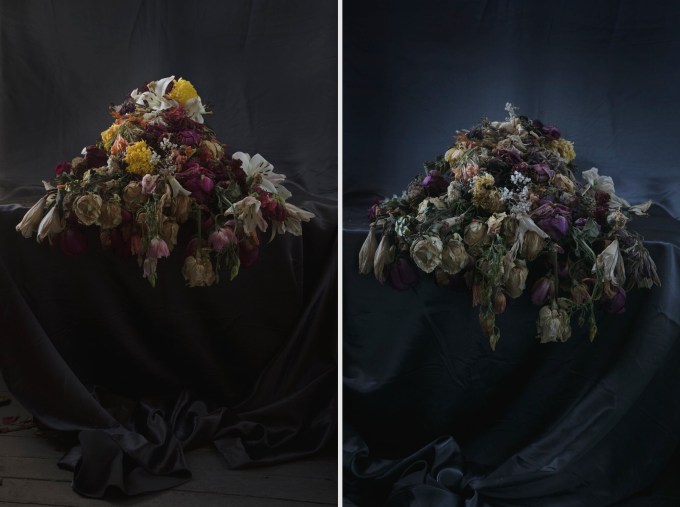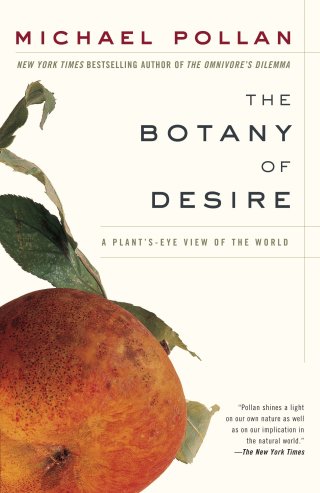Time, of course, is itself a creature of paradoxes — at once the relentless forward momentum of our mortality and the greatest antidote to the anxiety of aliveness. “When you realize you are mortal you also realize the tremendousness of the future,” wrote the poet, painter, and philosopher Etel Adnan in her gorgeous meditation on impermanence and transcendence. “You fall in love with a Time you will never perceive.”
Our experience of flowers is so deeply drenched in our sense of time. Maybe there’s a good reason we find their fleetingness so piercing, can scarcely look at a flower in bloom without thinking ahead, whether in hope or regret. We might share with certain insects a tropism inclining us toward flowers, but presumably insects can look at a blossom without entertaining thoughts of the past and future — complicated human thoughts that may once have been anything but idle. Flowers have always had important things to teach us about time.
Look into a flower, and what do you see? Into the very heart of nature’s double nature — that is, the contending energies of creation and dissolution, the spiring toward complex form and the tidal pull away from it. Apollo and Dionysus were names the Greeks gave to these two faces of nature, and nowhere in nature is their contest as plain or as poignant as it is in the beauty of a flower and its rapid passing. There, the achievement of order against all odds and its blithe abandonment. There, the perfection of art and the blind flux of nature. There, somehow, both transcendence and necessity. Could that be it — right there, in a flower — the meaning of life?

In the following century, as all stores in Los Angeles were forced to close at the mortal peak of a global pandemic, my photographer friend Elena Dorfman made her way to the city’s last open flower market, gathered dozens of flowers, and began documenting their slow entropic unblossoming as the days unspooled into weeks — photographs that became an arresting metaphor for a mortal world suddenly fathoming its fragility and resilience in a new way, suddenly awake to the profound responsibility of staying alive.

“To be a flower,” Emily Dickinson wrote in her pre-ecological poem about ecology, “is profound Responsibility.”

Complement with Rachel Carson on the ocean as a lens on the meaning of life and Rebecca Solnit on trees and the shape of time — for any fragment of nature contemplated closely and sensitively enough becomes a lens on human nature and our search for meaning, as Rockwell Kent so keenly felt amid the wild Alaskan solitude, observing that nature is “a kind of living mirror that gives back as its own all and only all that the imagination… brings to it.”

In consonance with Borges’s conviction that time is the substance we are made of, Pollan considers time as the tendril by which flowers exert their existential pull on us:

That is what Michael Pollan explores in some lovely passages from The Botany of Desire (public library) — the modern classic that gave us the radical roots of the flying-witch legend and the story of how a virus made the world’s most prized flower.
A century later, in one of the most poetic and existentially ravishing children’s* books of all time, Antoine de Saint-Exupéry made his hero’s central preoccupation the responsibility for a single flower — the Little Prince’s beloved rose: fragile and self-concerned, ferociously hungry for love, capable of such tenderness and such cruelty, so ephemeral and so stubborn, so much a miniature of the contradictory animating forces that make us human.
It may be, Pollan intimates, that flowers betoken precisely this elemental duality and through it cast their enchantment upon us. After contouring their astonishing evolutionary history — so astonishing that the baffled Darwin called it “an abominable mystery” — he writes:

For as long as humans have been alive and awake to our bittersweet cosmic inheritance as transient constellations of atoms capable of transcendent beauty, we have found in flowers models of moral wisdom, emblems of freedom, nonbinary pioneers, portals to paying attention. Over the epochs of time and thought, flowers have rivaled trees as mirrors for the meaning of our human lives.





